Activity 1: Build and Test the Object Detectors
In this activity, you will build and test infrared object detectors for the BOE Shield-Bot.
Parts List
(2) IR receivers
(2) IR LEDs (clear case)
(2) IR LED shield assemblies
(2) Resistors, 220 Ω (red-red-brown)
(2) Resistors, 2 kΩ (red-black-red)
(misc) Jumper wires
- Gather the parts in the Parts List, using the drawings below to help identify the infrared receivers, LEDs, and shield assembly parts.
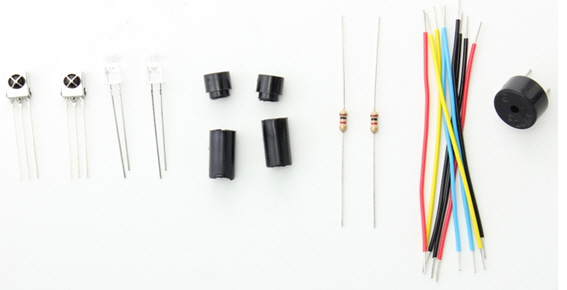
- Check the figure below to make sure you have selected infrared LEDs and not phototransistors. The infrared LED has a taller and more rounded plastic dome, and is shown on the right side of this drawing.
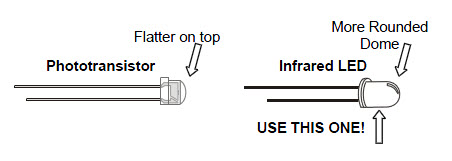
Assemble the IR Headlights
- Insert the infrared LED into the LED standoff (the larger of the two pieces) as shown below.
- Make sure the IR LED snaps into the LED standoff.
- Slip the short tube over the IR LED’s clear plastic case. The ring on one end of the tube should fit right into the LED standoff.
- Use a small piece of clear tape to secure the two pieces so the shield assembly doesn’t separate during use.
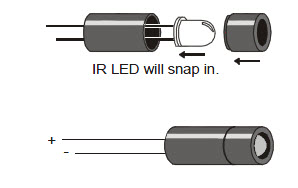
IR Object Detection Circuit
The next figures show the IR object detection schematic wiring diagram. One IR object detector (IR LED and receiver pair) is mounted on each corner of the breadboard closest to the very front of the BOE Shield-Bot.
- Disconnect the power and programming cables.
- Build the circuit in the schematic below, using the wiring diagram as a reference for parts placement.
- Note that the anode lead of each IR LED connects to a 2 kΩ resistor. The cathode lead plugs into the same breadboard row as an IR detector’s center pin, and that row is connected to GND with a jumper wire.
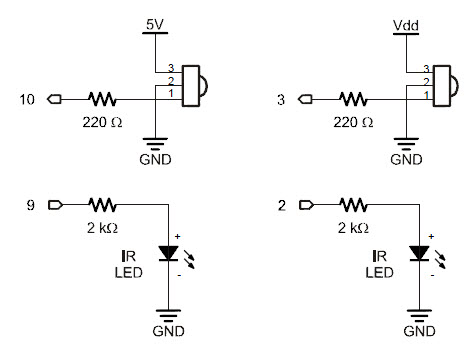
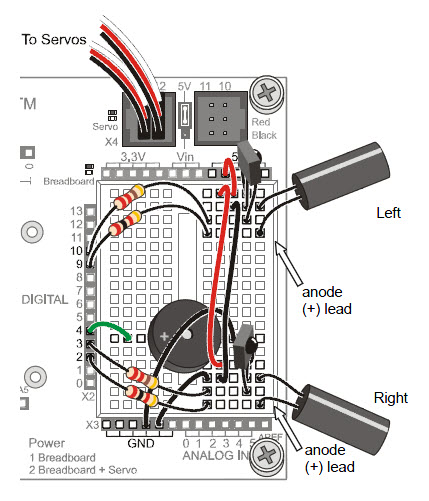
Watch your IR LED anodes and cathodes!
The anode lead is the longer lead on an IR LED by convention. The cathode lead is shorter and mounted in the plastic case closer to its flat spot. These are the same conventions as the red LEDs we have been using.
